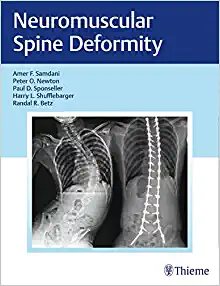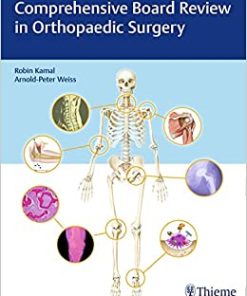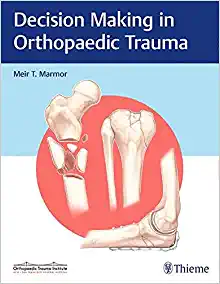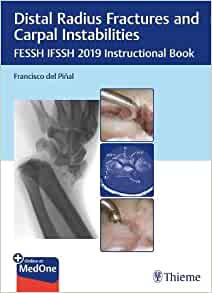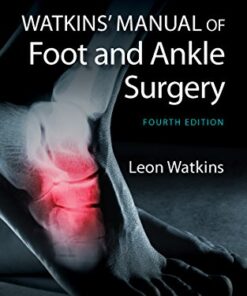The Ultimate Guide to Orthopaedic Surgery: A Comprehensive Resource for Patients and Professionals
Discover the Latest Advances in Orthopaedic Surgery
Are you looking to stay up-to-date on the latest advances in orthopaedic surgery? Look no further than ORTHOPAEDICS SURGERY your one-stop shop for all of your orthopaedic surgery needs. Our comprehensive selection of books covers a wide range of topics, from basic anatomy and physiology to advanced surgical techniques. Whether you’re a student or a practicing surgeon, you’ll find the perfect book to help you stay informed and improve your practice. Our selection includes textbooks, reference guides, and clinical handbooks, so you can find the right book for your specific needs. We also offer a variety of e-books, so you can access the information you need anytime, anywhere. With our easy-to-use search engine, you can quickly find the book you’re looking for. Plus, our customer service team is always available to answer any questions you may have. Don’t wait – explore our selection of orthopaedic surgery books today and discover the latest advances in the field.
ORTHOPAEDICS SURGERY
Cirurgia Ortopédica: Revisão e Preparação para Concursos e Provas (Original PDF from Publisher)
ORTHOPAEDICS SURGERY
Principles of Primary Total Hip Arthroplasty, 1st edition (Original PDF from Publisher)
ORTHOPAEDICS SURGERY
Principles of Primary Total Hip Arthroplasty, 1st edition (EPUB)
ORTHOPAEDICS SURGERY
Children Recovering from Complex Trauma, 1st edition (Original PDF from Publisher)
ORTHOPAEDICS SURGERY
ORTHOPAEDICS SURGERY
O Menisco: Da Avaliação e Lesão ao Transplante, 1st edition (Original PDF from Publisher)
ORTHOPAEDICS SURGERY
Watkins’ Manual of Foot and Ankle Medicine and Surgery, 5th Edition (EPUB)
ORTHOPAEDICS SURGERY
Reconstructive Surgery of the Hand and Upper Extremity (EPUB)
ORTHOPAEDICS SURGERY
ORTHOPAEDICS SURGERY
ORTHOPAEDICS SURGERY
ORTHOPAEDICS SURGERY
ORTHOPAEDICS SURGERY
Comprehensive Board Review in Orthopaedic Surgery,1st edition (EPUB)
ORTHOPAEDICS SURGERY
Biological Approaches to Spinal Disc Repair and Regeneration for Clinicians, 1st edition (EPUB)
ORTHOPAEDICS SURGERY
ORTHOPAEDICS SURGERY
AOSpine Masters Series, Volume 8: Back Pain (AOSpine Masters Series, 8), 1st edition (EPUB)
ORTHOPAEDICS SURGERY
Distal Radius Fractures and Carpal Instabilities: FESSH IFSSH 2019 Instructional Book (EPUB)
ORTHOPAEDICS SURGERY
ORTHOPAEDICS SURGERY
ORTHOPAEDICS SURGERY
ORTHOPAEDICS SURGERY
ORTHOPAEDICS SURGERY
ORTHOPAEDICS SURGERY
ORTHOPAEDICS SURGERY
ORTHOPAEDICS SURGERY
ORTHOPAEDICS SURGERY
ORTHOPAEDICS SURGERY
Watkins’ Manual of Foot and Ankle Medicine and Surgery, Fourth Edition (Original PDF from Publisher)
Introduction
This comprehensive guide to orthopaedic surgery is an invaluable resource for both patients and professionals. It provides a detailed overview of the various types of orthopaedic surgery, including joint replacement, arthroscopy, and fracture repair. It also covers pre-operative and post-operative care, as well as rehabilitation and recovery. With its clear explanations and helpful illustrations, this guide is an essential tool for anyone considering or undergoing orthopaedic surgery.
Overview of Orthopaedic Surgery: Types, Procedures, and Benefits
Orthopaedic surgery is a branch of medicine that focuses on the diagnosis, treatment, and prevention of musculoskeletal disorders. Orthopaedic surgeons specialize in the diagnosis and treatment of conditions affecting the bones, joints, ligaments, tendons, muscles, and nerves. These specialists are trained to diagnose and treat a wide range of musculoskeletal problems, from simple fractures to complex joint replacements.
Orthopaedic surgery can be divided into two main categories: reconstructive surgery and trauma surgery. Reconstructive surgery is used to correct deformities or restore function to a damaged limb or joint. Trauma surgery is used to treat injuries caused by accidents or sports-related activities.
Types of Orthopaedic Surgery
There are many different types of orthopaedic surgery. Some of the most common include:
Joint replacement surgery: This type of surgery is used to replace a damaged joint with an artificial one. Commonly replaced joints include hips, knees, and shoulders.
Arthroscopy: This procedure uses a small camera to look inside a joint and diagnose any problems. It can also be used to repair torn cartilage or ligaments.
Spinal surgery: This type of surgery is used to treat spinal disorders such as herniated discs, scoliosis, and spinal stenosis.
Sports medicine: This type of surgery is used to treat injuries related to sports and physical activity. Common procedures include ACL reconstruction, rotator cuff repair, and meniscus repair.
Procedures
The specific procedure used will depend on the patient’s condition and the type of surgery being performed. Common procedures include:
Arthroplasty: This procedure involves replacing a damaged joint with an artificial one.
Osteotomy: This procedure involves cutting and reshaping a bone to improve alignment or reduce pain.
Fusion: This procedure involves fusing two or more bones together to improve stability and reduce pain.
Benefits
Orthopaedic surgery can provide many benefits, including improved mobility, reduced pain, and improved quality of life. It can also help prevent further damage to the affected area and reduce the risk of complications.
In addition, orthopaedic surgery can help improve a person’s overall health and well-being. By restoring function and reducing pain, it can help people stay active and enjoy a better quality of life.
Pre-Surgery Preparation: What to Expect and How to Prepare
Post-Surgery Recovery: Tips for a Smooth Recovery
Post-surgery recovery is an important part of the healing process. It can be a difficult and uncomfortable time, but with the right preparation and care, you can make sure your recovery goes as smoothly as possible. Here are some tips for a successful post-surgery recovery:
1. Follow your doctor’s instructions. Your doctor will provide you with specific instructions on how to care for yourself after surgery. Make sure you follow these instructions carefully and don’t hesitate to ask questions if something isn’t clear.
2. Get plenty of rest. Rest is essential for your body to heal properly. Make sure you get enough sleep and take regular naps throughout the day. Avoid strenuous activities and try to keep stress levels low.
3. Eat a healthy diet. Eating a balanced diet full of fruits, vegetables, lean proteins, and whole grains will help your body heal and recover faster. Avoid processed foods and sugary snacks that can slow down your recovery.
4. Stay hydrated. Drinking plenty of fluids is important for post-surgery recovery. Aim to drink at least 8 glasses of water per day.
5. Take your medications as prescribed. If you’ve been prescribed any medications, make sure you take them as directed. This includes pain medications, antibiotics, and any other medications your doctor has prescribed.
6. Exercise regularly. Gentle exercise can help speed up your recovery. Talk to your doctor about what types of exercises are safe for you to do.
7. Ask for help. Don’t be afraid to ask for help from family and friends. They can help with tasks such as grocery shopping, cooking, and cleaning.
By following these tips, you can ensure a smooth post-surgery recovery. Remember to listen to your body and take it easy during this time. With proper care and attention, you’ll be back to your normal routine in no time.
Pain Management Strategies for Orthopaedic Surgery Patients
Pain management is an important part of orthopaedic surgery. It is essential to ensure that patients are comfortable and able to recover quickly and safely from their procedure. There are a variety of strategies available to help manage pain in orthopaedic surgery patients.
The first step in managing pain is to identify the source of the pain. This can be done through a physical examination, imaging tests, or other diagnostic tests. Once the source of the pain has been identified, the patient and their doctor can work together to develop a plan for managing the pain.
Medication is often used to manage pain in orthopaedic surgery patients. Non-steroidal anti-inflammatory drugs (NSAIDs) such as ibuprofen and naproxen are commonly prescribed to reduce inflammation and pain. Opioids such as codeine and oxycodone may also be prescribed for more severe pain. These medications should be taken as directed by the doctor and should not be stopped without consulting the doctor first.
Physical therapy is another important component of pain management for orthopaedic surgery patients. Physical therapists can help patients regain strength and range of motion in the affected area. They can also provide exercises to help reduce pain and improve mobility.
Other strategies for managing pain include heat and cold therapy, massage, acupuncture, and relaxation techniques. Heat and cold therapy can help reduce swelling and pain in the affected area. Massage can help relax muscles and reduce tension. Acupuncture can help stimulate the body’s natural healing process. Relaxation techniques such as deep breathing and visualization can help reduce stress and anxiety, which can contribute to pain.
It is important to remember that everyone experiences pain differently and what works for one person may not work for another. It is important to talk to your doctor about any pain you are experiencing and to discuss all available options for managing it. With the right combination of treatments, orthopaedic surgery patients can find relief from their pain and get back to living their lives.
Common Complications of Orthopaedic Surgery and How to Avoid Them
Orthopaedic surgery is a type of medical procedure that focuses on the musculoskeletal system, which includes bones, joints, ligaments, tendons, and muscles. It is used to treat a variety of conditions, including fractures, joint dislocations, arthritis, and other musculoskeletal injuries. While orthopaedic surgery can be beneficial in treating these conditions, it also carries certain risks and complications.
The most common complications associated with orthopaedic surgery include infection, nerve damage, blood clots, and excessive bleeding. Infection is one of the most serious complications of orthopaedic surgery, as it can lead to further complications such as sepsis or even death. Nerve damage can occur during surgery due to improper positioning of the patient or incorrect use of instruments. Blood clots can form in the veins of the legs or arms, leading to deep vein thrombosis (DVT) or pulmonary embolism (PE). Excessive bleeding can occur if the surgeon does not properly control the bleeding during the procedure.
Fortunately, there are steps that can be taken to reduce the risk of complications from orthopaedic surgery. First, it is important to choose an experienced and qualified surgeon who has experience performing the specific type of surgery you need. Additionally, it is important to follow all pre-operative instructions given by your doctor, such as avoiding certain medications or supplements prior to the procedure. During the procedure, the patient should be positioned correctly and the surgeon should take care to avoid damaging any nerves or vessels. Finally, post-operative care is essential for reducing the risk of infection and other complications. This includes taking antibiotics as prescribed, keeping the wound clean and dry, and following up with your doctor for regular checkups.
By taking these precautions, patients can significantly reduce their risk of complications from orthopaedic surgery. However, it is important to remember that no surgery is without risk, and complications can still occur despite the best efforts of the surgeon and patient. If you have any concerns about the potential risks of orthopaedic surgery, it is important to discuss them with your doctor before proceeding.
Conclusion
The Ultimate Guide to Orthopaedic Surgery is an invaluable resource for both patients and professionals. It provides comprehensive information on the diagnosis, treatment, and rehabilitation of orthopaedic conditions. This guide is a must-have for anyone looking to gain a better understanding of orthopaedic surgery and its associated treatments. With its easy-to-understand language and detailed illustrations, this guide is sure to be a valuable asset to any patient or professional seeking to learn more about orthopaedic surgery.











